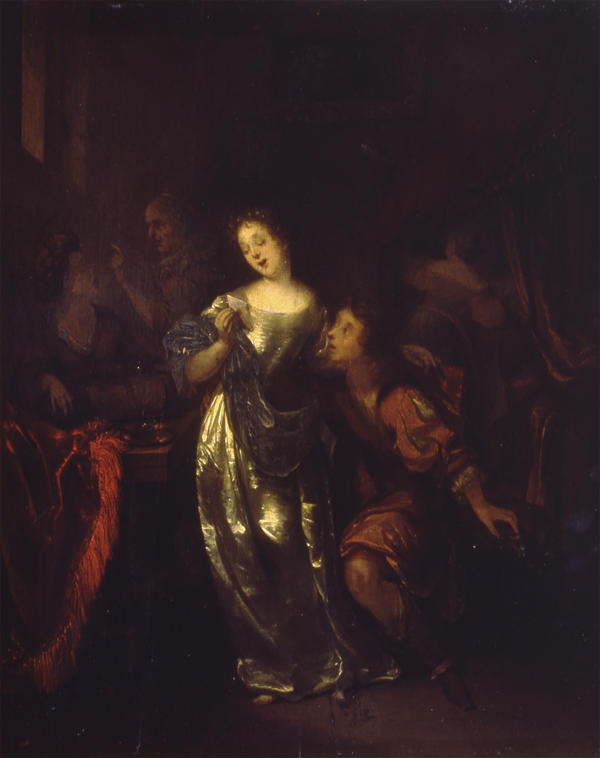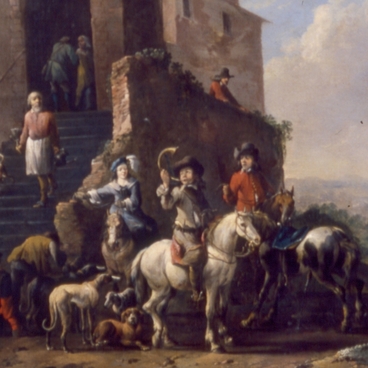The painting was received from the State Museum Fund in 1924. It has, on the back, a wax seal with the inscription Berlin bureau de, and the initials R with a crown above them. The seal has not yet been deciphered, but it is evident that the painting was acquired in Berlin and was part of the collection of one of Russian aristocrats. It was recorded in the museum inventory as a work by an unknown artist. Based on the signature and stylistic analysis, it is traditionally attributed to the Dutch artist Arnold Verbuis. Technological studies have confirmed the dating of the painting that was established by the museum.
It is not easy to guess the theme of the picture with precision. The lady has obviously just received a love message. The actions in the background, behind the main characters, complement the narrative. Showing a maid making a bed on the right, in the alcove, the artist informs us of the further progression of events. On the left, he depicts another scene with an old woman shaking her finger at the young girl.
Reliable information is only available concerning Verbuis’ activity in the years from 1673 to 1717. The artist probably studied with the famous genre painter from Leiden Willem van Mieris. For a long time, he lived at the Flemish court in Leeuwarden, where he worked as a portraitist and history painter. He also worked in Rotterdam, in Middelburg, and in The Hague.
Although Arnold Verbuis mastered many genres, and created portraits, historical, mythological, and genre paintings, his best works were small and graceful scenes of love encounters between ladies and gentlemen, always elegantly dressed and depicted in exquisite poses. These paintings enjoyed a great popularity. Lady with a Letter from Radishchev Museum’s collection is an example of such painting. Arnold Verbuis’ techniques are very diverse. The artist’s skills are manifested, first of all, in conveying the trembling light that illuminates the lady’s face and chest with a narrow beam, glides along the folds of her white satin skirt, and flickers on tassels and folds of the velvet tablecloth.
It is not easy to guess the theme of the picture with precision. The lady has obviously just received a love message. The actions in the background, behind the main characters, complement the narrative. Showing a maid making a bed on the right, in the alcove, the artist informs us of the further progression of events. On the left, he depicts another scene with an old woman shaking her finger at the young girl.
It imparts a moralistic tone to the scene, which was indispensable for a painting on such a subject. Paintings with scenes of seduction or love encounters had moralistic and even religious connotations, warning young girls from temptations that could prevent them from walking the path of their life journey with dignity and passing on to eternal life.



